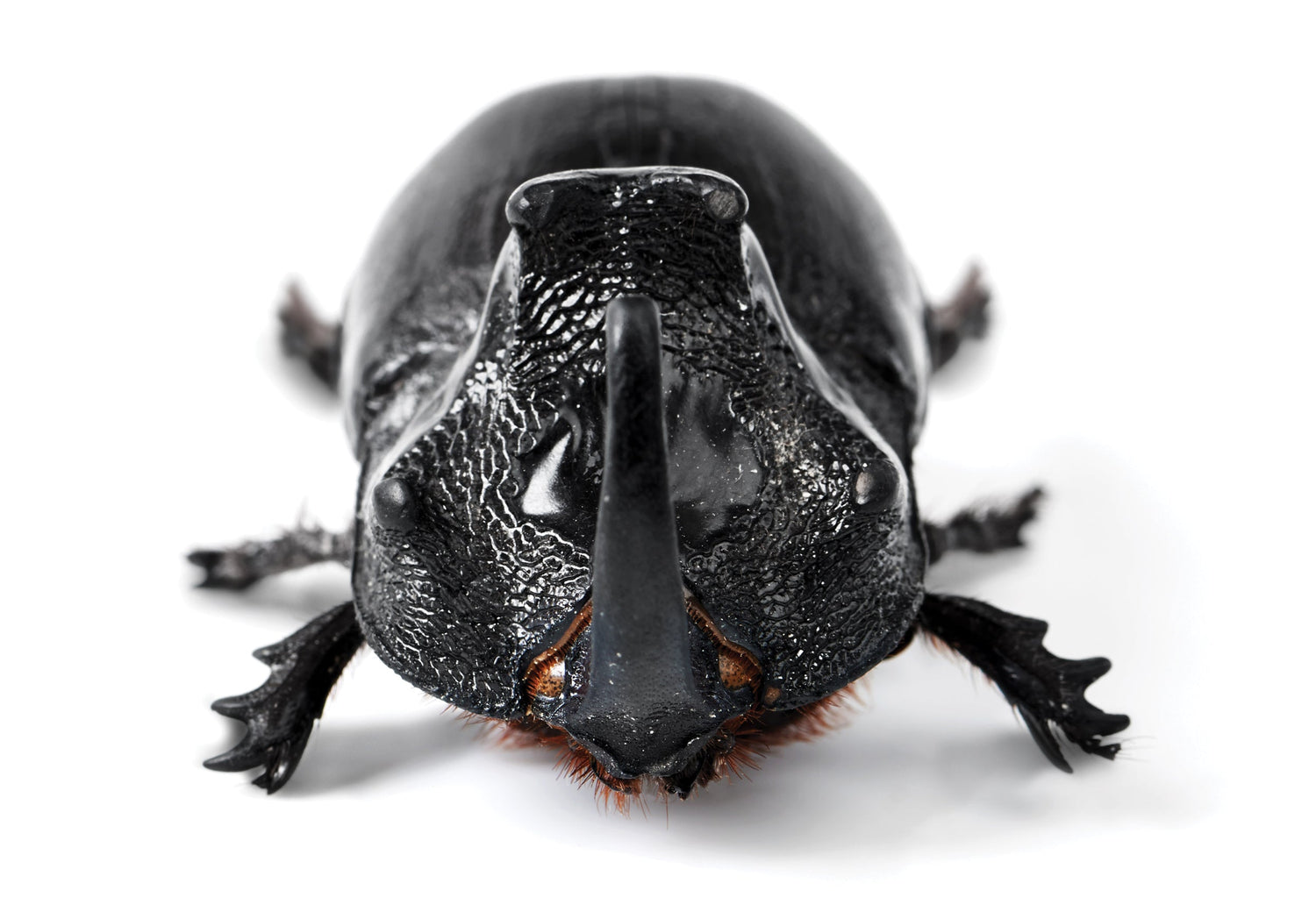Rhinoceros beetle: Oryctes rhinoceros
Unlike other insect pests, it is the adults of this particular pest that cause significant damage. Besides coconut, they also infest a variety of other plants including Palmyra, date palm, wild date, areca, sago palm, pandanus, pineapple, taro, banana, oil palm, and sugar cane. This pest is active year-round, with a notable peak from June to September, during which the adults invade the crowns of these plants.This widespread and cosmopolitan pest has become a major obstacle in the early establishment of juvenile palms, causing over 20% damage through collar entry. The pest population is present throughout the year but reaches its maximum during the monsoon season from June to September.
Symptoms of Damage

- Holes in central spindle.
- Holes with chewed fibre sticking out in central spindle.
- Triangular cuts on leaves.
The adult beetle bores into unopened fronds and spathes, causing a 10 to 15% loss in yield.When the attacked frond fully opens, it exhibits characteristic triangular cuts.The central spindle may appear cut or toppled.Fully opened fronds show distinctive diamond-shaped cuttings.Holes with chewed fibers sticking out can be observed at the base of the central spindle.
Identification of the Pest:
Egg: Oval creamy white egg in manure pits or decaying vegetable matter at a depth of 5 to 15 cm. Egg periods is 8 to 18 days. Female laid 140 to 150 eggs.
Grub: Grub is stout, sluggish, white "C"-shaped with pale brown head and found at a depth of 5 to 30 cm.
Pupa: Grub pupates in earthen cells at a depth of 0.3 to 1 m
Adult: Adult beetle is stout, brownish black or black and has a long horn projecting dorsally from the head in male. Horn is short in female.
Management:
(i) Cultural Method:
Remove and burn all dead coconut trees in the garden, as they are likely to serve as breeding grounds, to maintain good sanitation.Collect and destroy the various life stages of the beetle from manure pits, which are breeding grounds for the pest, whenever manure is lifted from the pits.
(ii) Mechanical Method:
During the peak period of population build-up, extract the adult beetles from the palm crown using GI hooks.Set up light traps following the first rains in the summer and monsoon periods to attract and kill the adult beetles.
(iii) Chemical Method:
As a prophylactic measure, fill the topmost three leaf axils around the spindle with any of the following mixtures:
Sevidol 8G 25 g mixed with fine sand 200 g. Apply this mixture thrice a year during April-May, September-October, and December-January.
For seedlings, apply 10.5 g (approximately three to four balls) of naphthalene balls covered with fine sand, once every 45 days.
Place 5 g of phorate 10G in perforated sachets in the two innermost leaf axils, and repeat this treatment twice at six-month intervals.Treat manure pits and other potential breeding sites with 0.01% carbaryl (50% WP) on a weight/weight basis, and repeat the treatment every six months.
(iv) Trap Method:
Set up Rhino lure pheromone traps at a rate of 5 traps per hectare to trap and kill the beetles. Hang the dispenser in a plastic bucket containing 2 liters of insecticide solution and replace the solution once a week. Dispose of the trapped beetles properly.
(iv) Biological Method:
Apply green muscardine fungus (Metarrhizium anisopliae) at a rate of 5 x 10^11 spores per cubic meter by spraying 250 ml of Metarrhizium culture mixed with 750 ml of water in manure pits to control the pest.
Release Baculovirus oryctes-inoculated adult rhinoceros beetles at a rate of 15 beetles per hectare to reduce leaf and crown damage caused by this beetle.
Soak 1 kg of castor cake in 5 liters of water in small mud pots and place them in the coconut gardens to attract and kill adult beetles.
Apply a mixture of either neem seed powder and sand (1:2) at 150 g per palm or neem seed kernel powder and sand (1:2) at 150 g per palm at the base of the three innermost leaves in the crown.
